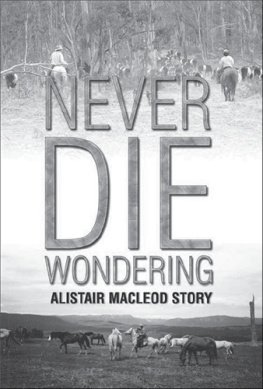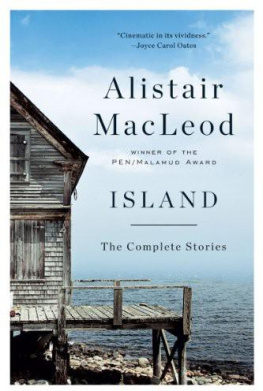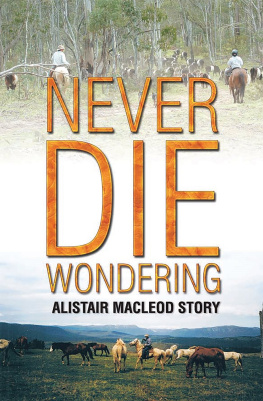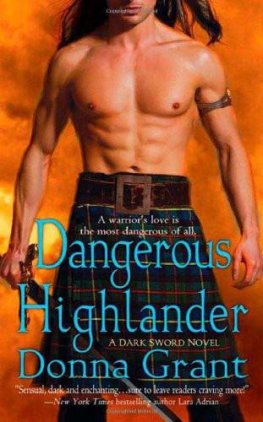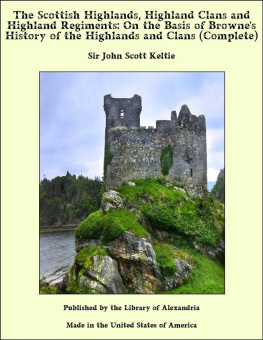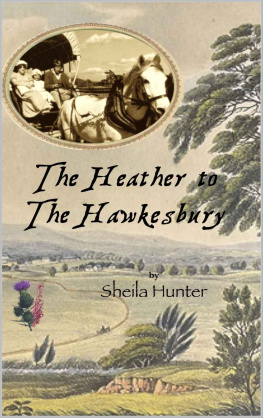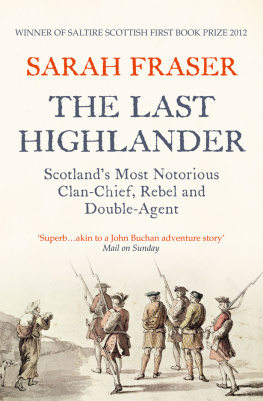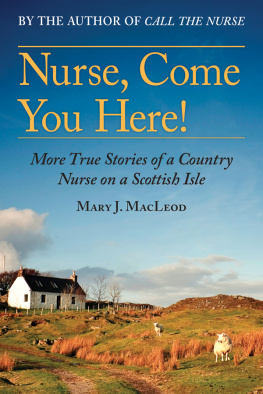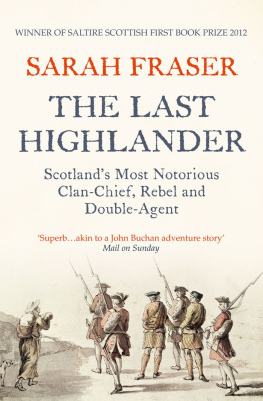Son of a Highlander
Alistair MacLeod
Copyright 2015 by Alistair MacLeod.
Library of Congress Control Number: 2015918893
ISBN: Hardcover 978-1-5144-4281-4
Softcover 978-1-5144-4280-7
eBook 978-1-5144-4279-1
All rights reserved. No part of this book may be reproduced or transmitted in any form or by any means, electronic or mechanical, including photocopying, recording, or by any information storage and retrieval system, without permission in writing from the copyright owner.
Rev. date: 12/11/2015
Xlibris
1-800-455-039
www.Xlibris.com .au
727778
Contents
This book is dedicated to the memory of my late father Harry Bliss MacLeod, a man who was extremely proud of his Scottish Highland heritage.
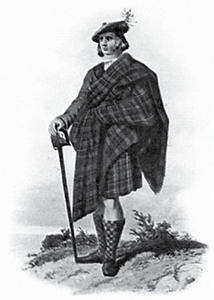
Introduction -The Story - Discovery
W hen I was a small boy, my father would sit me down and tell me of the family storyof who I am and where my bloodline came from. He would say to me, You are a Mac Leod. The Mac is Gaelic and means Son of . The Leod is a Norse name, derived from the Vikings who settled in far western Scotland. Our ancestry home is The Isle of Skye. He explained that the family originated from a small acreage near Dunvegan Village. He would tell me of the clan feuds with the neighbouring clan, the MacDonalds, whereby the bloody warfare lasted for over a hundred years. My father would tell me of the family being forced off their lands by the English. My great-great grandfather was Donald MacLeod, a master blacksmith on the island; he lived in Portree. Family legend tells how he fought in the American Civil War, and when he returned to Portree, he would light up his pipe using worthless American confederate notes (money) which he brought back from the war. He was known to be able to pick up the heavy blacksmith anvil and throw it a considerable distance. Donald, with his family, migrated from Scotland to Australia, settling in Bunderberg, Queensland, around the 1880s. Donalds son Peter, my great-grandfather, travelled to Melbourne and went under an alias, and was killed at an early age in a trench accident. There were two types of tartans that hung in our family home, MacLeod of Harris and MacLeod of Lewis along with the clans crest badge of a bulls head surrounded by a buckle with the tartan as the backdrop with the motto, Hold Fast. My grandfather Jack MacLeod, a very successful businessman, built a Tudor home at Ascot Vale, Melbourne, overlooking the Maribynong River. This he affectionately named the House Dunvegan, after Dunvegan Castle, the seat of the MacLeod chieftains on the Isle of Skye.
Forty odd years later, I found myself sitting down with my own son Brandon and explaining to him the same story told to me by my father, of who he is and his forefathers, that were Highlanders from the Isle of Skye. Here I was talking about Donald MacLeod, the master blacksmith, and his son Peter, who was killed tragically in a trench and who went under an alias name. There were many unanswered questions I wanted to know now. What had happened to Donald MacLeod, my great-great-grandfather? This Highlander had vanished from the records. And why did his son go under an alias? Ironically my grandfather, Peters son, had kept in contact with his Scottish relations well after his fathers death, those who stayed behind in Scotland when the family migrated to Australia. It was accepted in the family that there was some type of family fallout, being the reason Peter changed his name, and researching the Internet and documentation from ancestry links revealed the same reason was also given by others who were descendant of Peter. My father, who passed away many years ago, travelled to Bunderberg, Queensland, in the 1950s in search of the reasons for the alias and what had happened to Donald. He met with relations, but no one could bear any light on the story.
As a small boy, I was told by my grandmother, who had married the grandson of Donald MacLeod, how she experienced a ghostly apparition of Donald MacLeod coming to her room in an angry state, speaking in Gaelic with the image of his face, which she explained had a goatee beard, in the corner of the room. As a boy, I thought what nonsense, as I still do, but the story fascinated me. This Scottish Highlander, who somehow was from a family who were dispossessed from their lands in the far western Isles of Scotland, fought in the American Civil War, was a master blacksmith on the Isle of Skye, a wild disposition, a Gaelic-speaking person from a Highland clan, who had sailed to Australia in the 1880s and who had vanished around the same time his son was killed.
I was now in my midlife, and wanted to find out the truth behind the family story. And how far could I go back in the family tree, father to son. So I embarked on completing one of my late fathers goals that was not achievedfinding out what had happened to Donald and discover for myself the truth of the family story handed down through generations regarding the family being dispossessed from their traditional lands. I embarked on what I can only describe as the biggest emotional journey of my life. It is believed by many people that either the environment or/and genetics make up who we become. How similar were my forefathers to me? Did they hold the same values as the likes of my father and I? What were their strengths and weaknesses? Did they have any kind of prosperity in their lives or were their lives totally about adversity? Tracing ones own history, ones own ancestry, can be the most gratifying and emotional journey one can take. Every one of us will have an incredible family history; many people just have not discovered theirs.
In my family possessions, I had a 1797 British coin. It had been handed down through generations of father to son. I had inherited an old tattered leather photo album that contained photos of my grandfather Jack, with correspondence to his cousins in Scotland during World War I. These where all Donalds grandchildren. Jack had fought with the 29 th Battalion in France on the western front, the battle of Somme, Polygon Wood, and was wounded in Passchendaele. And there was an address at the back of one of these old photos. It was now nearly 100 years since this correspondence, and 131 years since Donald migrated to Australia. Was I able to find the grandchildren of my grandfathers cousins? What stories do they hold, who all share the same great-great grandfather.
I travelled to the Isle of Skye Scotland to discover and learn of what did exactly happen to my people. After much researching through ancestry records, from Australia and Scotland along with shipping records and meeting people from the Isle of Skye, Scotland, along with reading into the history of the Highlanders, I was able to answer the questions I had regarding the family.
I made contact with an Alan Hawthorn by email from Scotland who we both have the same great-great-grandfather Donald. Ironically, Alan was brought up by his grandmother at the address written at the back of the 100-year-old postcard from my grandfathers collection.
I flew to Glasgow, Scotland, and met with Alan and Kathleen Hawthorn over lunch, we both produced family documentation, when Alan displayed a photo of my grandfather Jack taken nearly a hundred years ago in Melbourne, Australia, proving our connection beyond doubt. Alan also produced another photo of Anne MacLeod, his great-grandmother, my grandfathers auntie with two Australian soldiers which look like the 29 th Battalion badges on their arms. My grandfathers mates meeting his Scottish auntie who had stayed behind when his grandfather migrated to Australia.
I travelled to the Isle of Skye, 131 years after my people had left. I was to knock on the door of a terrace house in Portree of which I had traced, being the home to that of my great-great-grandfather Donald. It was now a bed and breakfast, and I explained to the owner, My name is Alistair MacLeod. I am under the belief that this was the home of my great-great-grandfather. To my shock, the owner named Charlotte said, Thats correct, Alistair. He was the blacksmith Donald MacLeod. He lived here with his family, and his son Peter was the apprentice blacksmith.
Next page
